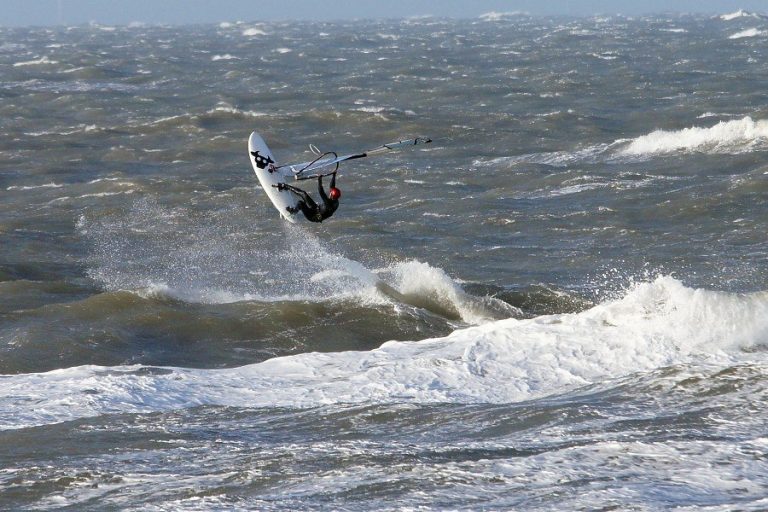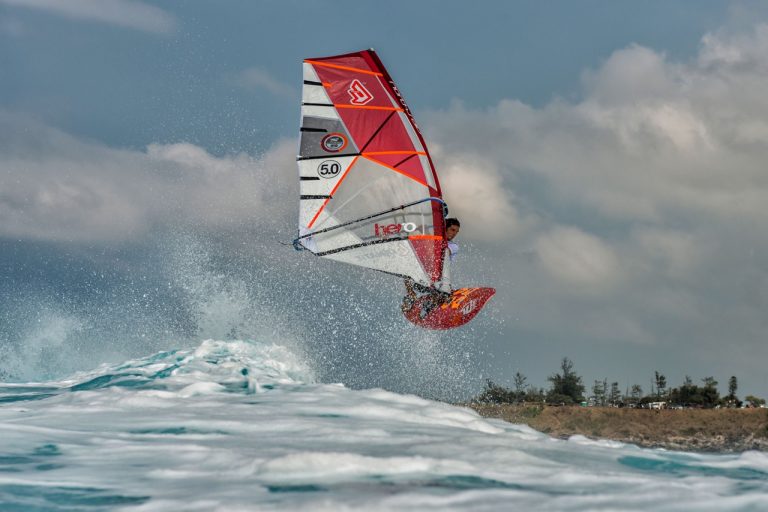We all want to get out windsurfing, we all want to improve, but sometimes to weather/commitments don’t allow for as much on water time as we would like. But don’t worry, we’ve got it covered. You CAN still improve your windsurfing from the safety of your sofa.
There’s always someone, that one person (let’s call him John Smith), that can just pick up any new skill in seconds. You all know who we mean, they rock up at the beach/lake say “I can’t quite get my carve gybes, this (insert common error) always happens; he is then given one piece of advice, goes out and completes a full planing gybe. John is a freak of nature (although, sometimes it is just one little thing that can make all the difference).
For 99% of windsurfers mastering new skills involves practice and lots of it. Yes, this means hours on the water, but there’s a lot you can do off of the water too in a spare half an hour that will see you improve beyond belief.
This is our favourite non-windsurfing windsurfing activity and it will, without a doubt, see you improve a lot and with very little effort!

1. Watch others.
Watching the latest pro level movie may be inspiring, but it could be doing more than that. If you’re learning to waveride watching turn after turn by JP, Levi, Kauli or any other top rider will make your brain more familiar with the movements. Our advice? Watch what you are aiming to do and concentrate on it. Don’t just watch JP smack the lip, check his body position throughout the turn, see what he moves when and how he turns the board. If you’re learning to vulcan, watch vulcans not skopus; take it one step at a time.
2. Watch yourself.
Perhaps even more valuable than watching the pros is watching yourself. On your next session get someone to film you. You could be told 100 times to bend your knees more through your gybes, but until you see for yourself it’s almost impossible to fully understand what you need to do.
3. Listen to the coaches.
There are many windsurfing coaches out there and they are of course focussed on improving your skills. Whilst a full weekend of coaching (check out Simon Bornhoft’s UK calendar) is probably the best way to improve, there’s plenty you can learn from them from the comfort of your own home too. A lot have their own DVDs which you can purchase and watch at your leisure (our favourite – GoPro by Colin and Marco) OR you can check out all of the coaching advice right here in the Boards technique section.
This involves sitting (preferably somewhere comfortable, maybe with a drink in hand), closing your eyes, relaxing and…

4. Read and research.
It’s not just the coaches that can give advice on the latest moves or windsurf basics. Everyone’s at it! From a first time windsurfer giving their account of a first lesson, to the pros telling you how to catch the best waves, you can find pretty much any information you’re for on the internet. Our advice? Be careful, use your own judgement and think sensibly about any advice. Windsurfing is an individual sport, what works for one person may not for another, and though most have the best of intentions not everyone’s advice will be 100% correct. Read what you can, and form your own opinion on what may work for you.
5. Visualise.
This is our favourite non-windsurfing windsurfing activity and it will, without a doubt, see you improve a lot and with very little effort! Once you’ve watched, read, learnt about and digested the new windsurfing move you want to master there’s one more vital stage. Visualisation. This involves sitting (preferably somewhere comfortable, maybe with a drink in hand), closing your eyes, relaxing and imagining yourself doing the move. It’s as simple as that, take yourself onto the water at your favourite spot, on your perfectly set up equipment and go through the move again and again in your head. If you’re feeling slightly more energetic, get to your feet and move your body through the movement too (good old muscle memory, for those that are familiar with this). The more your brain and body are used to the move on land the more likely it is to feel comfortable doing it on the water.
So, the next time you have a few spare minutes to yourself make sure you make the most of them, and when told to stop lazing on the sofa or watching windsurfing movies you can now legitimately say you are not merely lazing, but working on the latest windsurfing move.
Want to help improve your windsurfing? Check out the Boards technique section here.





